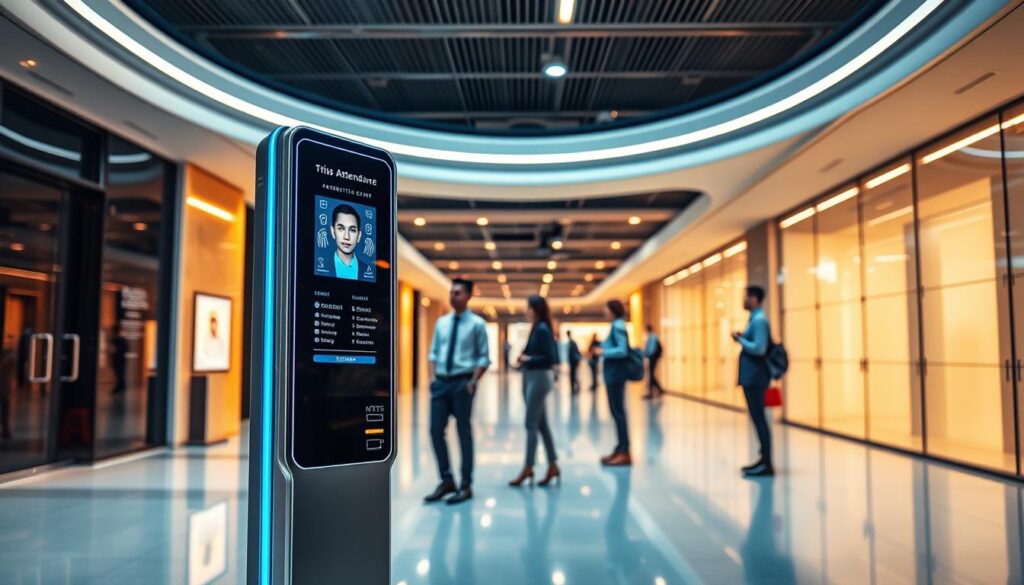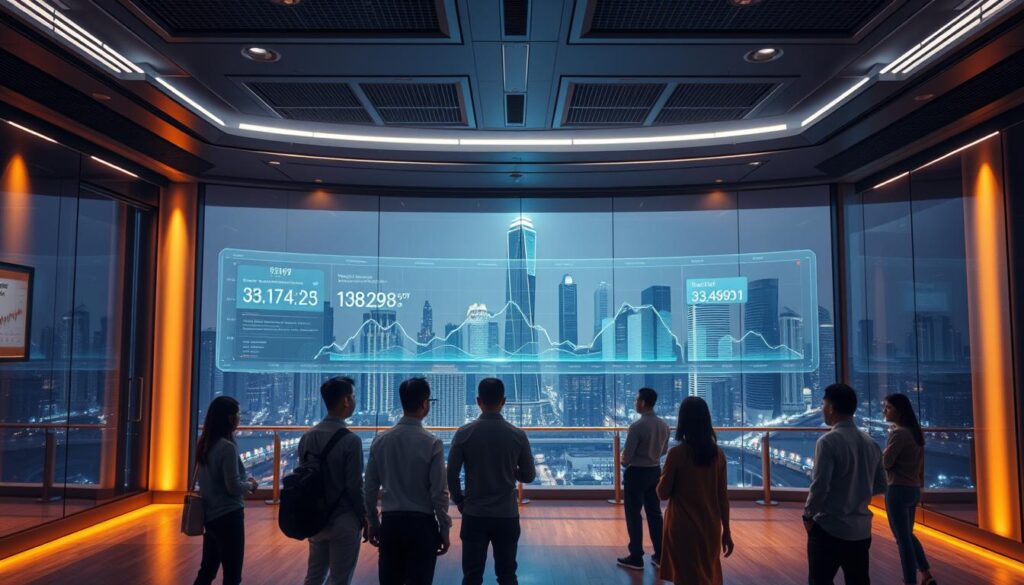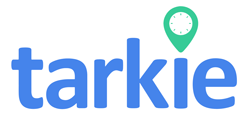Have we thought about the impact of our digital footprints in attendance systems? The world of attendance management is changing fast. New technologies like AI and biometrics are becoming popular. They make tracking attendance more accurate and efficient.
But, they also bring big privacy concerns. For small and medium businesses in the Philippines, finding a balance is key. This article explores the mix of challenges and opportunities in attendance systems. It encourages you to think differently about privacy in today’s automated world.
Key Takeaways
- Attendance systems are evolving, with technologies reducing errors and preventing time theft.
- Compliance with data protection regulations is crucial for organizations implementing digital attendance systems.
- Automation and AI integration in attendance systems can improve efficiency and accuracy.
- Biometric technologies offer enhanced security but raise ethical considerations regarding data privacy.
- Real-time data analytics in attendance management can help improve operational efficiency.
- Striking a balance between innovation and employee privacy is essential for SMEs.
The Evolution of Attendance Management
Attendance management has seen big changes over time. It has moved from simple punch cards to smart AI systems. These changes help businesses track their employees better and work more efficiently.
History of Traditional Attendance Systems
Way back in the 1800s, people used manual registers to track attendance. Later, punch cards were introduced. In 1901, the first mechanical time clocks were made by the International Time Recording Company. These old systems had problems like errors in payroll and trouble with keeping employees accountable.
In the 1970s, Ford Motor Company cut payroll errors by 30% with electronic clocks. This showed the need for better systems. But, old systems were not flexible enough for today’s work.
Transition to Automated and AI-Driven Solutions
The shift to digital attendance systems has been big. Companies using these new systems can save up to 25% on costs. Many are now using AI to make tracking attendance better and more efficient.
For example, ABC Fashions cut their admin hours by 50% with cloud-based software. This shows how these new systems help. The global time tracking market is expected to hit 201 billion pesos by 2025. Cloud-based systems also make employees more engaged, boosting participation by 20%.
Peloton saw a 22% jump in user activity with AI features. This shows how technology can help. Companies using automated systems save time and money. They also meet labor laws better.
For more on attendance tracking tech, check out this feature selection guide. The move to AI is a big step for attendance management. It changes how businesses work and makes them more productive and happy.
Privacy Challenges in Attendance Systems
Advanced attendance systems, like those with biometric authentication, pose big privacy issues. Companies must follow strict data privacy rules to stay compliant. They also need to manage employee data well.
Data Privacy Regulations and Compliance
When businesses use automated attendance systems, knowing data privacy laws is key. Laws like the General Data Protection Regulation (GDPR) require clear data handling rules. Breaking these rules can cost a lot, with fines up to 4% of global revenue.
Companies need strong data management plans. These plans help follow rules and address privacy worries of employees.
Concerns Over Biometric Data Security
Biometric data security is a big challenge in attendance systems. Technologies like facial recognition improve tracking but raise data breach risks. Employees worry about how their data is used and kept safe.
It’s important to consider ethics, like getting consent and being open. As companies use these systems, they must protect employee data to gain trust.

| Privacy Challenge | Impact on Organizations | Proposed Solutions |
|---|---|---|
| Data Privacy Regulations | Potential fines for non-compliance | Develop robust data governance frameworks |
| Biometric Data Security | Risk of data breaches | Implement strong encryption and access controls |
| Employee Consent | Trust issues with data handling | Enhance transparency about data usage |
Future Trends in Attendance Systems
The world of attendance management is changing fast. This is thanks to AI and automation. These technologies are making processes smoother and work better. Soon, attendance systems will use data to predict and improve how we manage our teams.
Integration of AI and Automation
AI is key in attendance systems now. It helps businesses automate tasks and get things right. Machine learning looks at attendance data to spot trends like burnout or tardiness.
This early warning helps improve morale and productivity. Automation also cuts down on data entry mistakes by up to 50%. This makes work more efficient.
Enhanced Data Analytics for Predictive Insights
Future attendance systems will rely on better data analysis. Cloud-based tech gives businesses instant access to attendance data. This leads to faster decisions and better work performance.
Using these systems can also reduce mistakes in payroll. Predictive analytics will help guess staffing needs. This prepares companies for changing work demands.

Technological Advancements Shaping Attendance Management
Technology is changing how we manage attendance. IoT and geolocation tracking help keep an eye on employees. This makes attendance tracking more efficient.
The Role of IoT and Geolocation Tracking
The Internet of Things (IoT) changes old attendance systems. It lets employees clock in and out using their location. This is great for the Philippines, where many work outdoors.
GPS tracking helps remote workers log their hours accurately. Geofencing adds another layer by only allowing check-ins in certain areas. This cuts down on time fraud.
Impact of Biometric Authentication Technologies
Biometric tech is making attendance tracking better. Features like facial recognition and fingerprint scanning boost accuracy and security. These systems are also safe and easy to use.
They work well with cloud-based solutions, helping teams work from anywhere. Blockchain ensures attendance records are safe and correct. Smart contracts make sure pay is on time.

Challenges Faced by Traditional Attendance Tracking
Methods like roll calls and sign-in sheets often fail to track attendance accurately. They lead to errors that upset organizations. These mistakes, like missed names or lost sheets, make payroll hard and hurt employee trust.
High Rates of Human Error in Manual Systems
Manual systems for tracking hours are not reliable. They often have errors. For example, buddy punching, where one clocks in for another, is common. Switching to automated systems can greatly lower these mistakes, making records more accurate.
Incompatibility with Remote and Flexible Work Arrangements
Traditional methods struggle with remote and flexible work. They can’t handle real-time tracking across different work settings. Mobile apps for tracking attendance solve this problem. They let employees check in from anywhere, meeting the needs of remote work and improving attendance management.
![]()
Opportunities Presented by Automated Attendance Systems
Automated attendance systems offer many benefits, mainly for small and medium enterprises (SMEs) in the Philippines. They make processes smoother and save costs. Many companies see big drops in expenses for managing attendance.
These systems also make employees happier. They feel more responsible for their attendance. This is because they know their hours are tracked accurately.
Cost Savings for SMEs in the Philippines
For SMEs, using automated attendance systems can save a lot of money. These systems cut down on administrative costs by up to 30%. Manual tracking often leads to errors, affecting payrolls.
Automated systems ensure accurate pay based on attendance. This makes the process clear. It also lets HR teams work on more important tasks, boosting productivity.
Improved Employee Satisfaction and Accountability
Automated attendance systems also boost employee happiness. Workers like the clear and simple tracking. It makes them feel more accountable, lowering absences.
Companies can spot and fix attendance issues early. This keeps the workplace positive. Plus, these systems work well with other HR tools, making everything more efficient.
AI in Attendance: Improving Data Capture and Security
AI in attendance systems change how we handle data and keep it safe. They use new tech to cut down on mistakes, make things run smoother, and protect worker info.
Reducing Human Error through Automation
AI attendance systems cut down on mistakes made by people. They show a 30% drop in errors for companies soon after they start using them. These systems use smart learning to spot odd things like unexpected absences or double entries.
This makes sure records are correct. It also lets HR teams focus on important work, making everyone more productive.
Real-Time Monitoring and Predictive Analytics
AI is great at watching things in real-time. It gives companies useful info on how people show up. This helps plan the workforce better and makes things run more smoothly.
With this info, companies can make detailed reports on who’s there, who’s late, and who’s not coming in. HR teams can then tackle problems early, like when lots of people might be off. This helps keep everyone happy and healthy.
Data Privacy and Ethical Considerations in Using AI
As more companies use AI for tracking attendance, protecting data privacy is key. It’s important to build trust with employees by following ethical rules. This means following laws and being open about how data is used.
Ensuring Compliance with Data Protection Laws
Following laws like GDPR and CCPA is crucial for AI use in tracking. These laws guide how data is handled. Companies must use strong security and train staff on privacy to stay compliant.
Building Trust through Transparency and Consent
Being open about data use is vital for trust. Employees need to know how their data is used. This way, they can give informed consent. Using data visualization can help them understand better.
| Aspect | Importance | Best Practices |
|---|---|---|
| Data Privacy | Protects personal information from breaches and misuse | Implement strong security measures |
| Ethical Considerations | Fosters respect and engagement among employees | Train staff on ethical implications of data usage |
| AI Compliance | Ensures adherence to legal data handling standards | Regular audits and updates on compliance measures |
| Transparency | Builds trust and promotes informed consent | Communicate clearly about data collection and usage |
By focusing on ethics, companies can use transparency and follow laws. This protects privacy and makes the workplace better. It shows companies are serious about using AI responsibly.
Conclusion
The future of attendance systems is changing fast, thanks to new tech like AI and data analytics. In the Philippines, companies are tackling privacy issues while using automated tools to work better. They move from old ways to new, data-based systems, making things more efficient and happy for employees.
Studies show that using AI for attendance can cut down on paperwork by 57% and mistakes by 90%. This means more accurate records, which is key; 43% of companies have had problems with payroll because of wrong time tracking. With modern systems, businesses can work better and be more accountable.
The move to advanced attendance systems is a big step for companies wanting to succeed. By using tech like biometrics and predictive analytics, they can save money and create a better work environment. The future of attendance systems is about finding the right balance between new tech and keeping privacy.
